Laptop bags are made from many different materials. The most common options include real or faux leather, polyester, canvas, polypropylene, and nylon. You should also look at the denier rating of the bag’s material to see how durable it is and how much protection it provides.
Clearly, a laptop is a significant investment. A new model can cost anything from $300 to $3,000, and last three to five years, on average.
Let’s be honest – it can be tedious carrying around an expensive device all day.
Getting the right bag matters. A good one will offer an extra layer of protection while making carrying your computer comfortable, convenient – and even stylish!
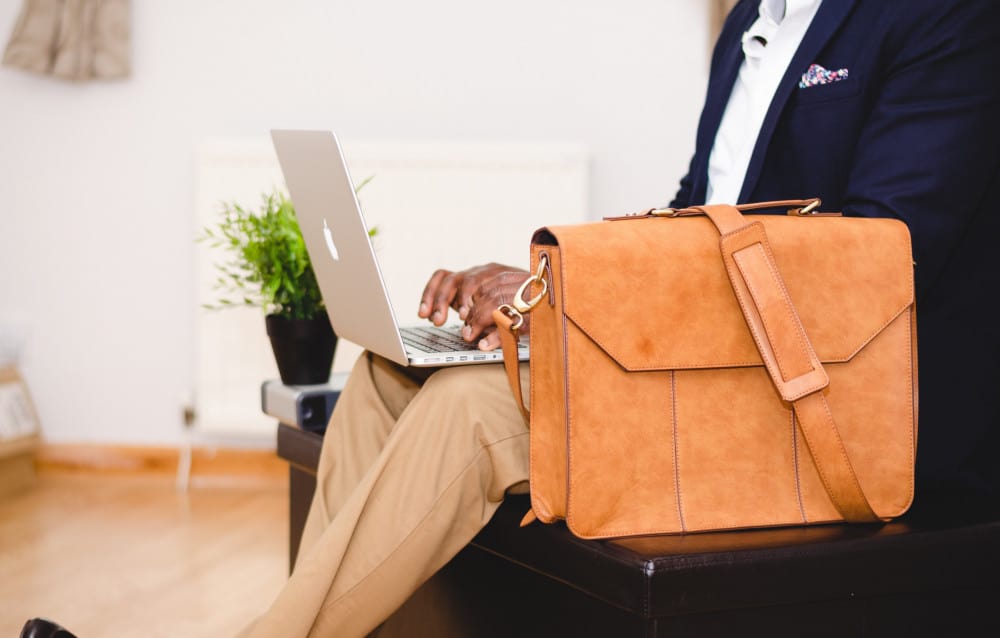
What Material Are Laptop Bags Made From?
Like messenger bags (our favorite style accessory for men), laptop bags come in different materials and different styles.
Some are sleeve-like cases with protective padding, others are larger carriers with straps or handles.
The bag style that works best for me might not be the ideal choice for you. However, it’s fair to say the bag has to be strong and durable. It needs to secure and protect the laptop and stand up to daily use.
Luckily, there is a way to measure how strong your bag’s material is.
What is a Denier rating?
The denier rating measures the strength of thread or fiber in a fabric. Technically, the number in the rating is the mass (in grams) of 9,000 meters of a single strand of thread in the fabric.
Though other factors can play a role in the overall strength of a type of fabric, the denier rating is a good indicator of density and durability. The rating is written with a numeral followed by the letter D.
So if you see 600D, you know that the material has a denier rating of 600. Technically, this means that 9,000 meters of thread in the fabric weighs 600 grams, but you’ll never need to remember that.
The key thing is the larger the number, the heavier the material and typically the stronger the material.
So what is a good denier rating? Lightweight bags and backpacks are often around 300D-450D, with heavier-duty options coming in at 600D or above.
With denier ratings in mind, let’s take a look at the most common types of laptop bag material and how they compare.
Nylon
Nylon is a common material for all sorts of backpacks and bags, including those meant to carry laptops. It boasts some significant advantages.
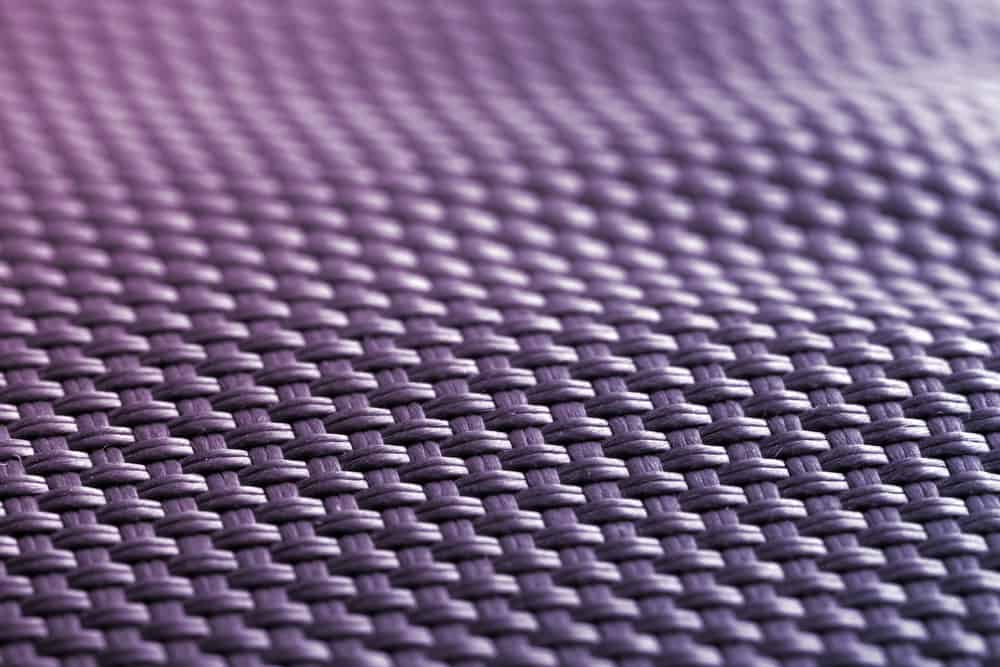
First of all, nylon is incredibly lightweight, so it’s easy to carry a messenger-style laptop bag all day, even assuming it has an added foam cushion to protect your laptop.
Secondly, nylon is quite durable. It can stand up to daily use better than many other fabrics.
There are different strengths of nylon of course.
If you want extra durability, a great option is ballistic nylon. Originally developed for the military, this fabric can have a denier rating of 1000D or more!
If you care about style, however, nylon isn’t always the best option. It’s difficult to dye, so color choices are usually limited, and it can be expensive.
One brand that has made a big deal of this material is of course, Tumi. Their black-on-black ballistic nylon designs are instantly recognizable – a great way to turn a limitation into a feature!
As an example, this is my older Tumi laptop bag – I’ve had it for years so maybe its getting a little tired now, but it’s lasted really well:
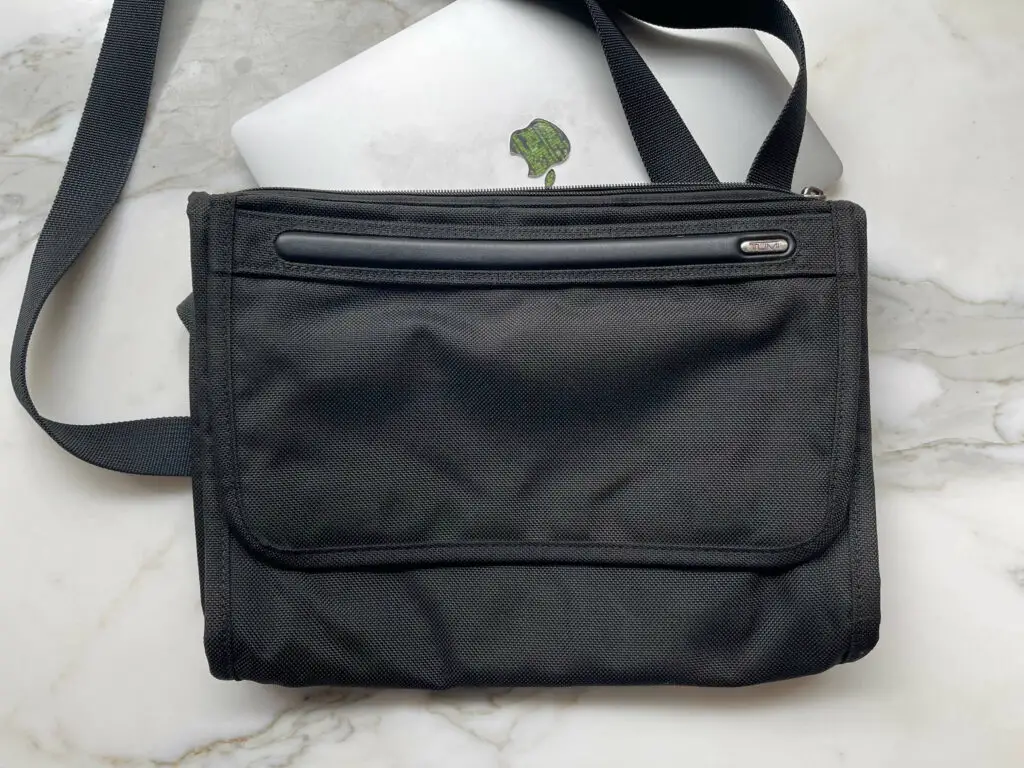
(I also have another, slightly newer Tumi laptop bag in blue – no, I’m not an addict, honest)
Polyester
Polyester is made from synthetic fibers. It’s not as lightweight as nylon, but not as heavy as options like leather or canvas.
Polyester bags are typically cheaper than nylon. The material also acts a bit more like natural fabric, so it can be dyed and designed. Strong polyester bags can be between 300D and 1000D.
There are some drawbacks to polyester (*cough – try googling “1970s polyester clothing” to see what I mean).
The main issue is that it isn’t as breathable as nylon or other natural fibers.
This can be an issue if you have a bag with a shoulder strap or a backpack-style carrier. It’s easy to get hot and sweaty in those parts of your body that contact the bag. This can be offset with a good design that offers breathable mesh panels – it’s definitely worth checking for those.
Leather
Leather laptop bags don’t have a denier rating because they’re made from animal hide, not fabric.
But consider this: even today, with high-quality synthetic materials available, many (most?) motorbike riders prefer the durability and protection of leather over any alternatives. If it’s good enough to protect a biker from road rash, it can probably keep a laptop secure.
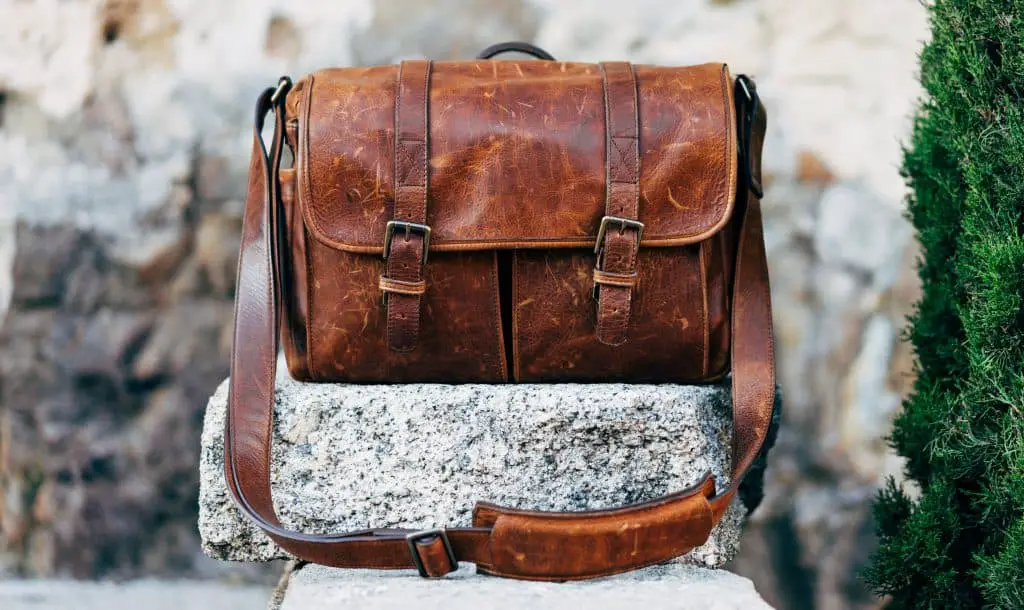
Leather bags are durable. They’re not going to rip, and they provide a natural cushion that thinner materials cannot match.
Faux leather, usually made from treated plastic, can offer similar advantages, but it’s often thinner and not quite as durable as the real thing.
Leather can be tanned or dyed, and it comes in attractive, sophisticated-looking styles.
The main drawback to leather products is their high cost. High-quality leather is more expensive, and you need bags with quality stitching and hardware to ensure the seams are as strong as the hide itself.
But come on, lets face it.
Leather messenger-style bags just look cool…
Canvas
Moving on. Canvas is a time-tested material.
Before ballistic nylon and other synthetic materials, canvas, a type of strong cotton-based fabric, was a popular choice for bags.
Members of the military and outdoors enthusiasts used it for their packs.
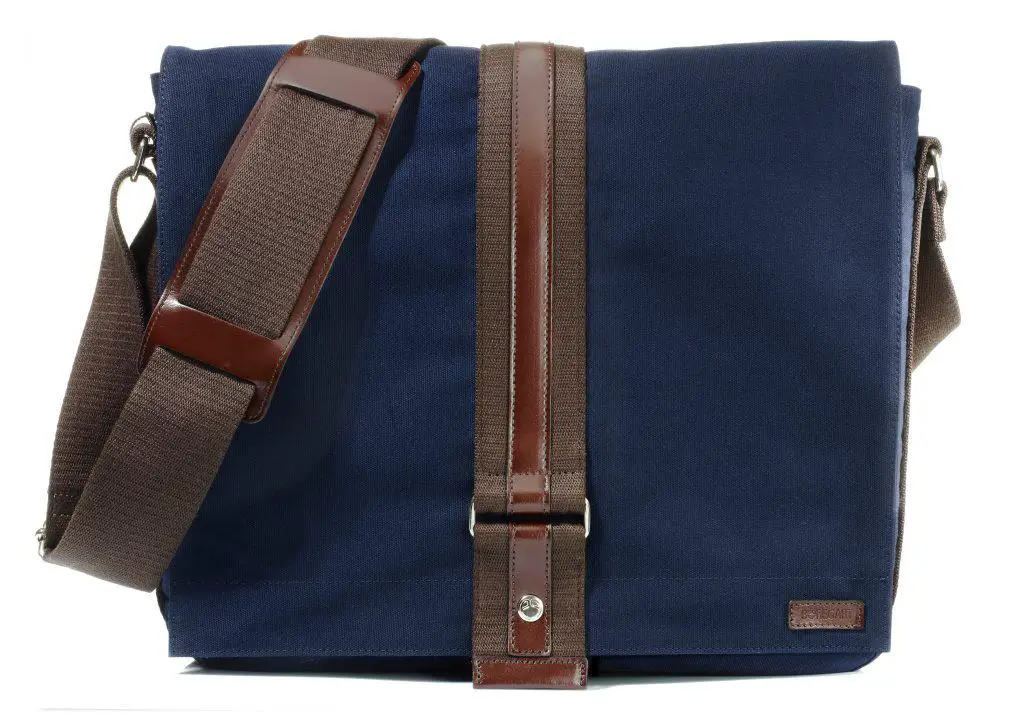
Because it is a natural fabric, canvas is easy to dye and print on. It can be very durable, and it’s usually reasonably priced. Especially if you’re looking for a tote-style bag, you will likely find many canvas options.
Canvas is thick and tough, but it can break down over time if not cared for (especially if it gets wet and isn’t dried properly – it can get moldy which breaks down the fibers). It’s on the heavy side too.
Polypropylene
Polypropylene is a type of plastic that doesn’t absorb water and offers a high level of insulation. You can find some packs, totes, and shoulder bags made from this woven thermoplastic.
These products can be very inexpensive, and the material is recyclable.
The main drawback is that polypropylene deteriorates over time when exposed to direct sunlight. Not only do colors fade, but the plastic fibers weaken too.
This makes it a popular material for inexpensive bags that are not expected to last.
How Do I Choose a Good Laptop Bag?
OK – as I mentioned before, the definition of a “good” laptop bag depends on your needs and preferences:
- Where will you carry your laptop? If you’ simply ‘re just carrying your laptop from a car park to the office each day, a simple tote, shoulder bag, or briefcase may work just fine. If you’re commuting via public transport, walking, or biking with your laptop, you will want something sturdier, more durable, and easier to fasten. If you’re going even further afield, we wrote a whole article on the best messenger bags for air travel
- Does it have good hardware? The denier rating is an important measure of the bag’s strength. However, you also need to ensure that the zippers or other fasteners are sturdy, close securely, and that the seams are as durable as the fabric
- Can it protect my computer from the elements and drops? It’s going to happen – so you’ll want enough padding to ensure the laptop survives an accidental drop. You should also get something water-resistant. If you get caught in rain or someone spills a drink on your bag, you want enough protection to protect your electronic investment
- Do I need a laptop sleeve? If you opt for a basic carrier such as a tote, you may want to opt for a neoprene laptop sleeve as well. Neoprene is a synthetic rubber that offers enough padding to protect your laptop from an accidental drop. It’s also easy on the computer’s casing, so it won’t cause scratches.
- What else are you carrying? If you need to bring headphones, chargers, thumb drives, and other equipment, you need a bag that can accommodate those things. Look for something that helps with organization – smaller pockets and dividers so you’re not just rummaging around for that one connector you need …
Before You Go…
OK, that’s a wrap! Hope that was useful. Now we’ve run through the main materials, it might be time to check out our list of the best messenger-style laptop bags. We’ve done the research, check out our next article for the low-down:
The BEST Lightweight Laptop Messenger Bags
Related Articles
- Are Messenger Bags Bad For Your Back?
- How to Wear a Messenger Bag [the Right Way!]
- Are Tumi Laptop Bags Worth It?
FAQ
How do I know what size laptop bag to buy?
Many bags are for specific laptop sizes: 8-inch, 12-inch, 14-inch, 15.6-inch, and so on. Even if the case is for your laptop size, you should double-check the dimensions of the compartment before purchasing.
How much do laptop bags cost?
What are the types of laptop bags?
What is a Denier rating?
All product names, logos, brands, and trademarks are the property of their respective owners
